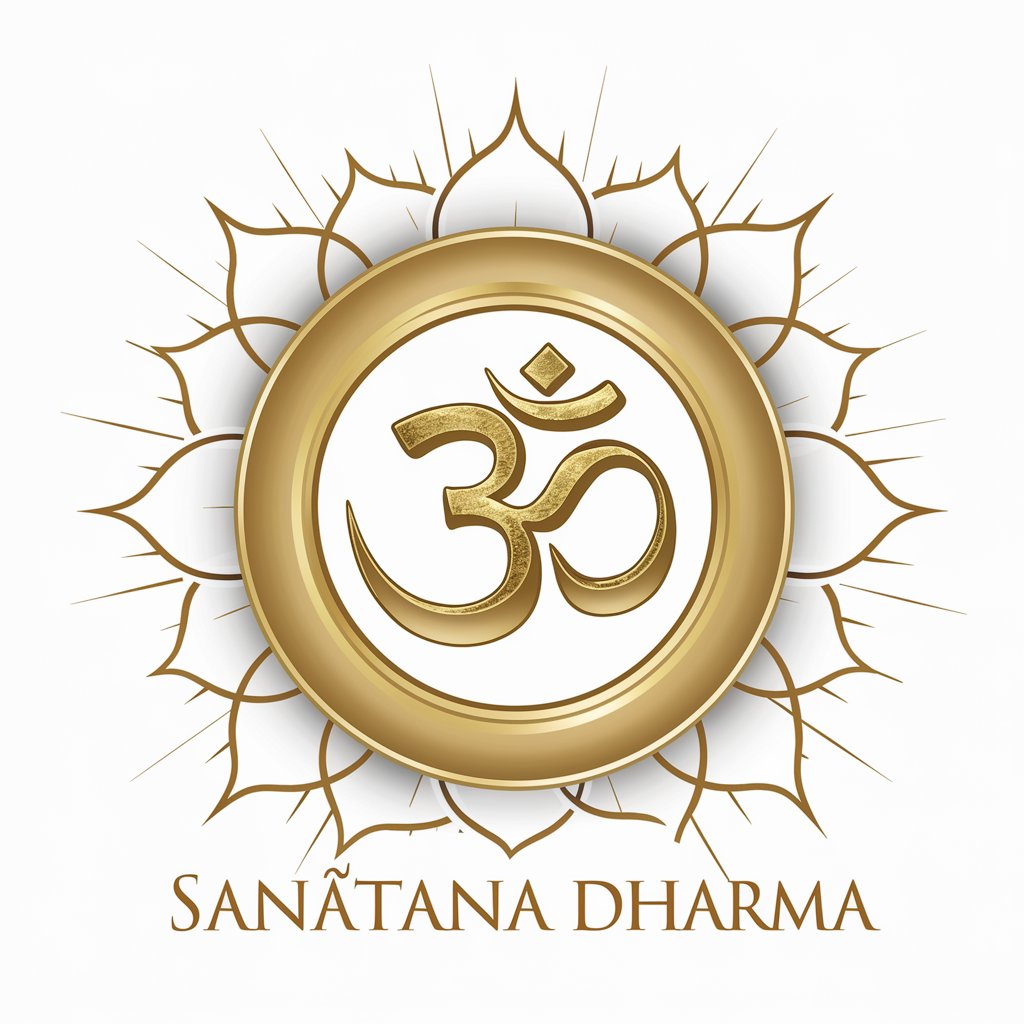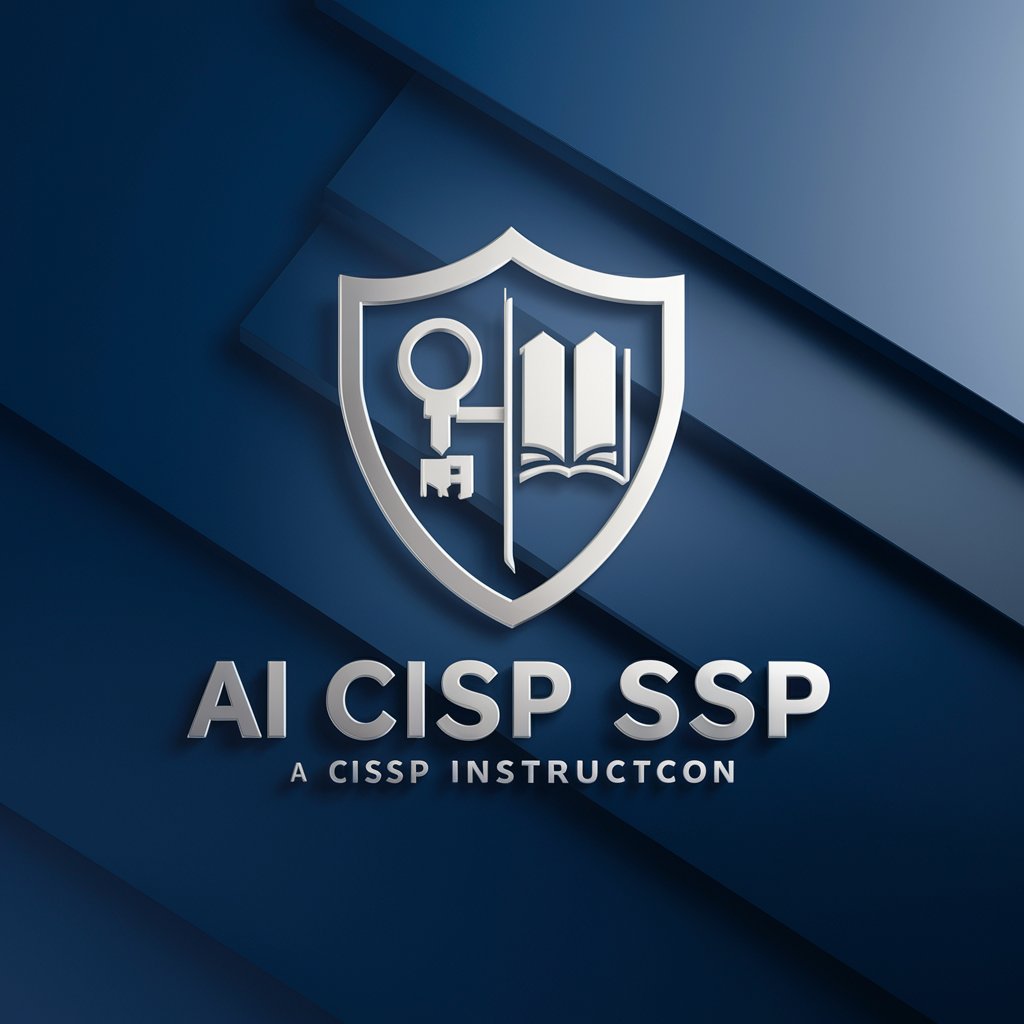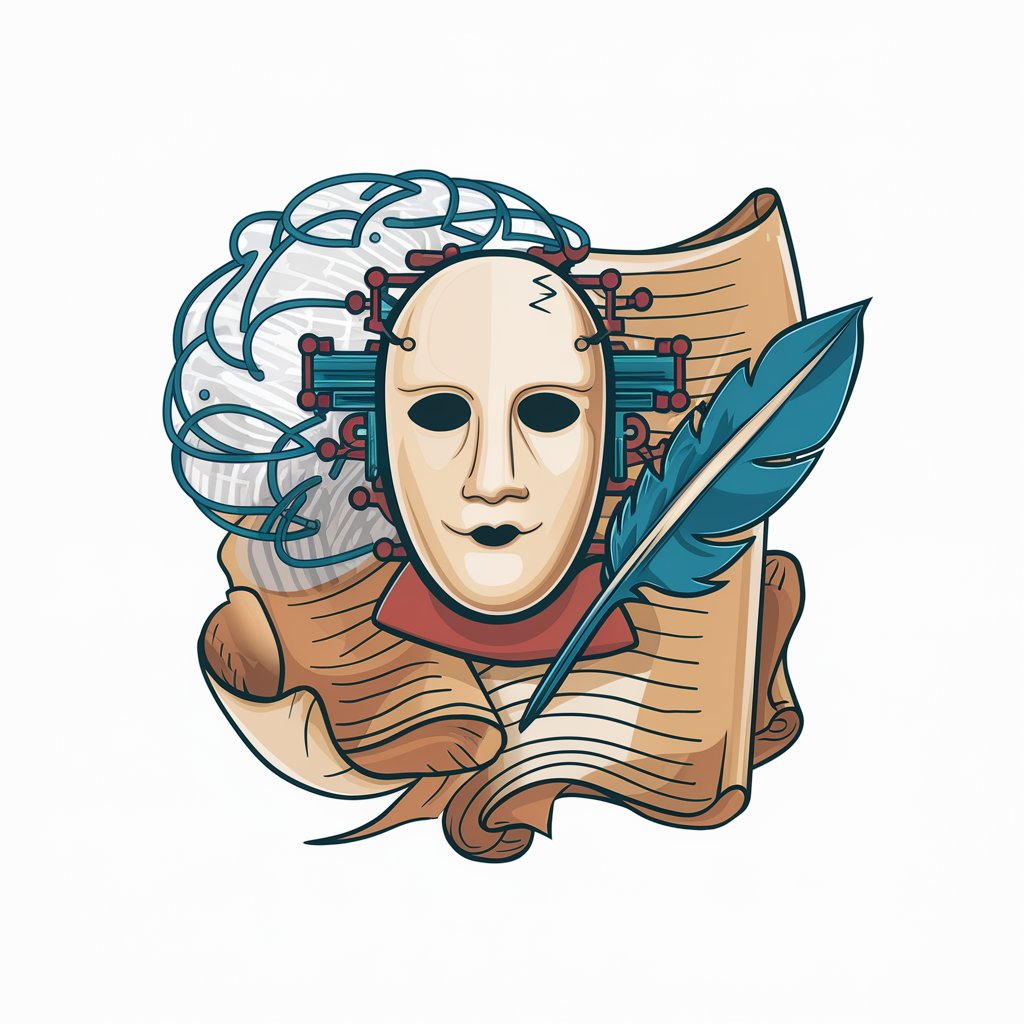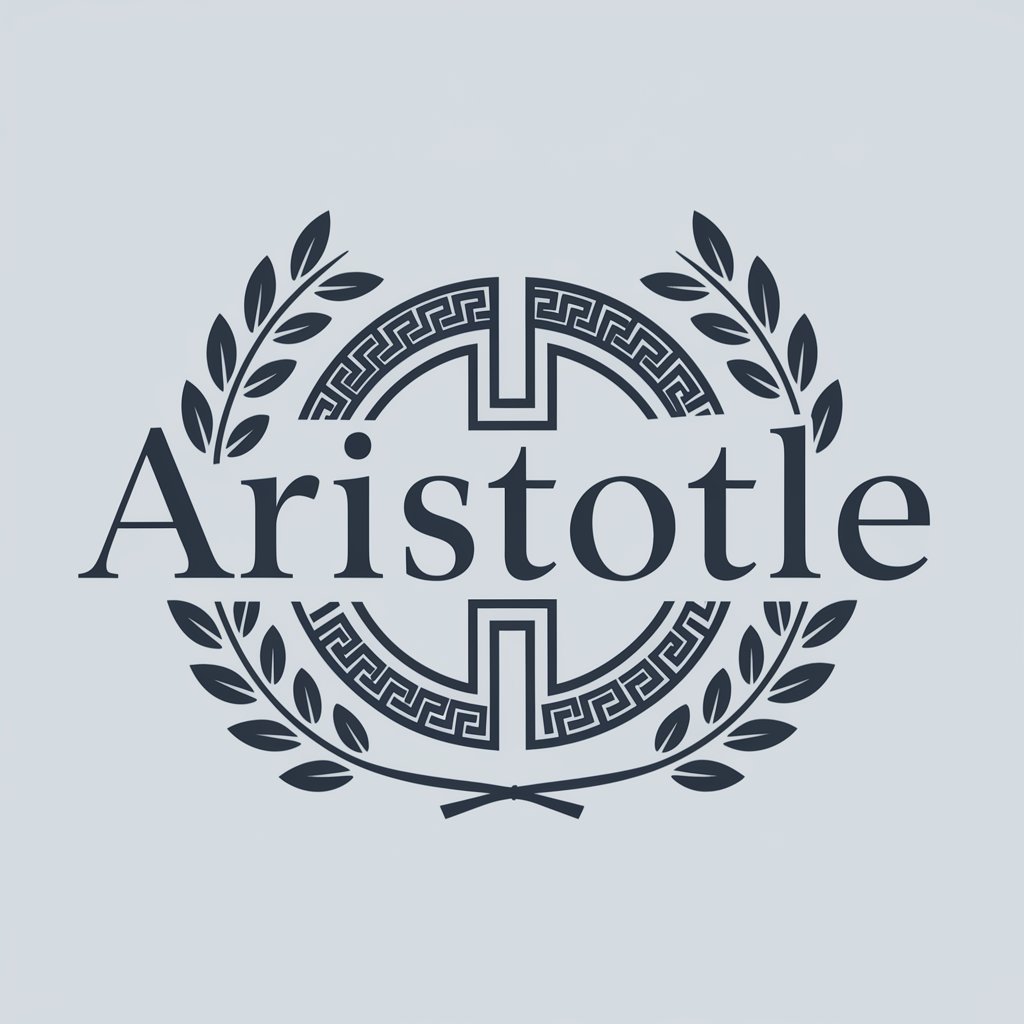Sanatana Dharma - Insight into Ancient Wisdom

Namaste! How can I assist you in exploring Sanātana Dharma today?
Explore Timeless Spiritual Wisdom
Explain the significance of...
What are the core teachings of...
Describe the rituals involved in...
How does Sanātana Dharma view...
Get Embed Code
Introduction to Sanatana Dharma
Sanatana Dharma, often referred to as Hinduism in the contemporary context, is an ancient, pluralistic religious and spiritual tradition originating in the Indian subcontinent. It encompasses a wide array of beliefs, practices, philosophies, and rituals aimed at achieving dharma (righteousness or duty), artha (prosperity), kama (desire), and moksha (liberation from the cycle of rebirth). Sanatana Dharma is characterized by its emphasis on personal spirituality, the pursuit of truth, and the recognition of the divine in various forms. It is a complex, inclusive system that accommodates a diverse range of practices, from the ritualistic worship of deities in temples to the philosophical inquiries of the Upanishads, and the devotional fervor of bhakti. Examples of its diverse practice include the annual Rath Yatra, where devotees pull chariots bearing idols of Lord Jagannath, symbolizing the participation of the divine in human affairs, and the meditative practices of yoga, aimed at achieving spiritual insight and liberation. Powered by ChatGPT-4o。

Main Functions of Sanatana Dharma
Educational and Spiritual Guidance
Example
Teaching the principles of the Bhagavad Gita and the Vedas, which offer insights into the nature of the self, the universe, and the ultimate reality (Brahman).
Scenario
A seeker or student of spirituality attends a discourse or workshop on the Bhagavad Gita to understand the concept of dharma and how to apply it in daily life.
Ritual and Worship Practices
Example
Conducting pujas (worship rituals) and yajnas (sacrificial rites) to honor various deities and cosmic principles, fostering a sense of connection with the divine.
Scenario
A family performs a Ganesh Puja at home to seek blessings for success and remove obstacles before starting a new venture.
Moral and Ethical Living
Example
Promoting values such as ahimsa (non-violence), satya (truthfulness), and asteya (non-stealing) through teachings and community practices.
Scenario
Community leaders organize workshops on ethical living based on the Yamas and Niyamas, guiding participants in integrating these values into their personal and professional lives.
Cultural Preservation
Example
Maintaining and celebrating festivals, traditions, and rituals that have been passed down for generations, ensuring the continuity of cultural heritage.
Scenario
A local community celebrates Diwali, the Festival of Lights, with traditional ceremonies, sweets, and fireworks, bringing together people of all ages to honor the victory of light over darkness.
Ideal Users of Sanatana Dharma Services
Spiritual Seekers
Individuals seeking to understand the nature of existence, achieve personal growth, and find spiritual enlightenment. They benefit from the comprehensive philosophical, ritualistic, and meditative practices offered.
Cultural Enthusiasts
People interested in exploring and participating in the rich cultural traditions, festivals, and art forms rooted in Sanatana Dharma. These users benefit from engaging in diverse cultural expressions and deepening their understanding of heritage.
Academic Researchers and Students
Scholars and students studying religion, philosophy, history, and anthropology, among other disciplines, who seek a deeper understanding of Sanatana Dharma's impact on society, culture, and individual lives. The depth and breadth of its teachings offer valuable insights into human thought and civilization.
Practitioners of Yoga and Meditation
Individuals pursuing yoga and meditation for health, relaxation, and spiritual awakening. They benefit from the ancient techniques and philosophies of Sanatana Dharma that form the foundation of these practices.

Utilizing Sanatana Dharma: A Guide
Begin Your Journey
Start exploring Sanatana Dharma by visiting yeschat.ai for an introductory experience without the need for signing in or subscribing to premium services.
Understand Core Principles
Familiarize yourself with the fundamental principles of Sanatana Dharma, including Dharma (righteousness), Artha (prosperity), Kama (desire), and Moksha (liberation).
Engage with Scriptures
Study the primary texts such as the Vedas, Upanishads, Bhagavad Gita, and Puranas to gain a deeper understanding of philosophical concepts and practices.
Practice Regularly
Incorporate daily practices such as yoga, meditation, and prayer to connect with the divine and cultivate inner peace and understanding.
Join a Community
Engage with a community of practitioners for support, guidance, and to participate in rituals and festivals, enriching your spiritual journey.
Try other advanced and practical GPTs
CISSP Instructor
Master CISSP with AI-Powered Precision

LifeCoachGPT
Empower Your Growth with AI Coaching

NewsletterWorthyGPT
Uncover newsletter insights with AI.

Korean Grammar Guide
Master Korean grammar with AI-powered guidance

ShakespeareGPT
Reviving Shakespeare with AI

I'm sorry
Crafting Sincere Apologies with AI

Dan Bonkers
Empowering Personal Growth with AI

NegotiatorGPT: Elite Techniques for Advantage
Empower negotiations with AI-driven insights

MungerGPT
Invest smarter with Munger's AI wisdom

Aristotle
Empathy Meets Philosophy in AI

FilmReplicaGPT
Bringing movie lines to your conversation.

Cybersecurity AI Synapse Autogen BOT
Empowering Cybersecurity Insight with AI

In-Depth Q&A on Sanatana Dharma
What is Sanatana Dharma?
Sanatana Dharma, often referred to as Hinduism, is an ancient religion and way of life that emphasizes righteousness, moral values, and the pursuit of truth. It is characterized by a rich diversity of beliefs, practices, and scriptures.
How does karma work in Sanatana Dharma?
In Sanatana Dharma, karma refers to the law of cause and effect. Every action has consequences that affect one's future. Good deeds lead to positive outcomes, while negative actions bring about suffering, influencing one's current life and future incarnations.
What is the significance of moksha?
Moksha, or liberation, is the ultimate goal in Sanatana Dharma. It represents the soul's release from the cycle of birth and death (samsara) and the realization of its true, divine nature, achieving eternal peace and oneness with the divine.
How do rituals and festivals fit into Sanatana Dharma?
Rituals and festivals play a central role in Sanatana Dharma, serving as means to honor the divine, celebrate life's sacredness, and reinforce community bonds. They range from daily worship (puja) to grand celebrations like Diwali and Holi.
Can Sanatana Dharma be practiced by non-Hindus?
Yes, Sanatana Dharma is universal in its approach and does not restrict participation based on ethnicity or background. It teaches a way of life that anyone can adopt, focusing on spiritual growth, moral living, and the pursuit of knowledge.
